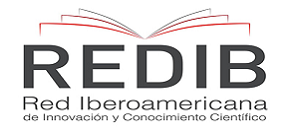Design and evaluation of an active and cultural tourism program in Santa Clara (Cuba)
Keywords:
tourist animation, tourist recreation, active tourism, cultural tourismAbstract
Objectives: The objective of this research was to design and evaluate an active and cultural tourism program in Santa Clara (Cuba).
Methods: The work was carried out at the hotel Los Caneyes (Santa Clara, Cuba). Hotel workers and clients participated in the study. Different methods of theoretical level and empirical level were used. The theoretical level methods were: analysis-synthesis, induction-deduction and historical-logical. The empirical level methods were: bibliographic and documentary research, interviews, observation, survey and user criteria. The statistical analysis was conducted with the statistical software SPSS 23.
Findings: The tourist animation program was structured based on the theory and results of the applied techniques and instruments, and included sports activities (cycling, water gymnastics, sports games, and stretching) and cultural activities (visit to emblematic places, varied shows with local artists, and tasting of national cocktails). The evaluation of this tourism program showed that hotel clients were satisfied with it and that the hotel staff were trained to implement it successfully.
Conclusions: Therefore, the tourism program presented in this article can be taken as an example to offer hotels clients active and cultural tourism.
Downloads
References
Rokicka-Hebel M, Ziólkowska J, Patyna A. The professional profile of a leisure time animator in tourism and recreation services. Balt. J. Health Phys. Act. 2016;8(4):157-168. https://doi.org/10.29359/BJHPA.08.4.17
Wang X, Li X, Zhen F, Zhang J. How smart is your tourist attraction? Measuring tourist preferences of smart tourism attractions via a FCEM-AHP and IPA approach. Tourism Management. 2016;54:309-320. https://doi.org/10.1016/j.tourman.2015.12.003
Jaklovev Z. Administración de la animación en el turismo. Gevgelija, Republic of Macedonia; 2016.
Muñoz Barriga A. Percepciones de la gestión del turismo en dos reservas de biosfera ecuatorianas: Galápagos y Sumaco. Investigaciones Geográficas. 2017;(93):110-125. https://doi.org/10.14350/rig.47805
Ibáñez R, Rodríguez Villalobos I. Tipologías y antecedentes dela actividad turística: turismo tradicional y turismo alternativo. Medio ambiente y política turística en México. 2012;1:17-33.
Molina S, Rodríguez Woog, Cuamea F. Turismo alternativo, un acercamiento político y conceptual. México: Trillas; 1986.
Organización Mundial del Turismo. Declaración de La Haya sobre turismo. Declaraciones de la OMT. Madrid. 1989;3(1). https://doi.org/10.18111/unwtodeclarations.1989.03.01
Kwok L, Xie KL, Richards T. Thematic framework of online review research: A systematic analysis of contemporary literature on seven major hospitality and tourism journals. Int. J. Contemp. Hosp. 2017;29(1):307-354. https://doi.org/10.1108/IJCHM-11-2015-0664
Sitio web del MINTUR [citado 10.12.21]. Disponible en : https://www.mintur.gob.cu/historia/
Porras Núñez C. La animación turística, clave en la fidelización del cliente [citado 10.12.21]. Disponible en: https://www.hosteltur.com/130048_la-animacion-turistica-clave-en-la-fidelizacion-del-cliente.html
Manual operativo para los hoteles de la marca Horizontes. Grupo Hotelero Cubanacán. S.A. Cuba; 2015.
Ruiz Torres AM. Programa de actividades socioculturales para el perfeccionamiento de la gestión de animación turística hotelera. Aplicación Hotel" Meliá Cayo Santa María” [Tesis doctoral]. Santa Clara (Cuba): Universidad Central" Marta Abreu" de Las Villas; 2009.
Downloads
Published
How to Cite
Issue
Section
License
Copyright (c) 2022 Iván Eras Alfonso

This work is licensed under a Creative Commons Attribution 4.0 International License.
Copyright and Licensing
For all articles published in Atena Journals, copyright is retained by the authors. Articles are licensed under an open access Creative Commons CC BY 4.0 license, meaning that anyone may download and read the paper for free. In addition, the article may be reused and quoted provided that the original published version is cited. These conditions allow for maximum use and exposure of the work, while ensuring that the authors receive proper credit.
Reproducing Published Material from other Publishers
It is absolutely essential that authors obtain permission to reproduce any published material (figures, schemes, tables or any extract of a text) which does not fall into the public domain, or for which they do not hold the copyright. Permission should be requested by the authors from the copyrightholder (usually the Publisher, please refer to the imprint of the individual publications to identify the copyrightholder).
Permission is required for:
- Your own works published by other Publishers and for which you did not retain copyright.
- Substantial extracts from anyones' works or a series of works.
- Use of Tables, Graphs, Charts, Schemes and Artworks if they are unaltered or slightly modified.
- Photographs for which you do not hold copyright.
Permission is not required for:
- Reconstruction of your own table with data already published elsewhere. Please notice that in this case you must cite the source of the data in the form of either "Data from..." or "Adapted from...".
- Reasonably short quotes are considered fair use and therefore do not require permission.
- Graphs, Charts, Schemes and Artworks that are completely redrawn by the authors and significantly changed beyond recognition do not require permission.
Obtaining Permission
In order to avoid unnecessary delays in the publication process, you should start obtaining permissions as early as possible. If in any doubt about the copyright, apply for permission. Atena Journals cannot publish material from other publications without permission.
The copyright holder may give you instructions on the form of acknowledgement to be followed; otherwise follow the style: "Reproduced with permission from [author], [book/journal title]; published by [publisher], [year].' at the end of the caption of the Table, Figure or Scheme.














